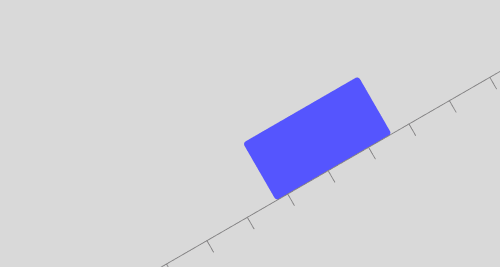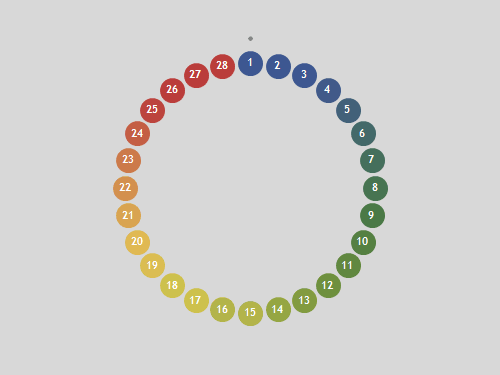Text

Launching a rock from a tower with height equal to Earth's radius. Air resistance is ignored, but variation of gravitation is not. First rock is just dropped. Then a rock is given some tangential speed. When the initial angular velocity is about five times the angular velocity of the Earth, a rock gets into orbit around the Earth. When this ratio is about six, the orbit becomes circular.
64 notes
·
View notes
Text



Continuing, the break-off angle of an accelerating sphere is smaller. Three values of acceleration are depicted, relative to g: 0.1, 0.5, and 2.0.
42 notes
·
View notes
Text

Rolling of a wheel can be viewed as a combination of translation and rotation about the centre of mass. Or as pure rotation about the instantaneous axis that is where the wheel touches the ground.
18 notes
·
View notes
Text

A wheel rolls on a horizontal surface without slipping. Also rolling is the acceleration vector (red). It has two components. Tangential acceleration (orange) changes the magnitude of the velocity vector of a point on the rim of the wheel. Normal acceleration (green) changes its direction.
Note: this is from Irodov, problem 1.52., where it says that acceleration is constant in magnitude and pointing permanently towards the center of the wheel. I humbly disagree. Please comment.
75 notes
·
View notes
Text

Animating polygon-by-polygon previously I realized I can simplify my code and construct a tower with an arbitrary number of polygons. What's the smallest and what's the largest height of a tower?
309 notes
·
View notes
Text

Triangle must be the top. (after szimmetria-airtemmizs)
290 notes
·
View notes
Text

This GIF has 10 frames, 8 colors, and 26 kilobytes.
82 notes
·
View notes
Text

Using pencil and paper, determine which area is larger within this rhombus with inscribed circles and 60-degree angle at the top.
29 notes
·
View notes
Text

A brick expands as it is repeatedly heated and cooled down. Horizontal ground sees the brick remaining still as the force of friction on the expanding right half of the brick balances the force of friction on the expanding left half of the brick. Forces are similarly balanced during the cooling. However, with the ground inclined the left and right directions along the slope are no longer considered equal as gravity breaks the symmetry, and the brick slowly moves down the slope. The animation wildly exaggerates the displacement. Using realistic data, my snail-brick travels about 0.2% of its length during a heating cycle.
63 notes
·
View notes
Text

Ignoring air drag, a stone is thrown up an inclined ground at an angle that ensures largest range. As inclination grows, range drops.
46 notes
·
View notes
Text

I have already mentioned the Josephus problem where elimination removes adjacent elements. Here is a related Cowboy-shootout problem where elimination removes oposite elements. Both problems are featured at day 19 of Advent of Code 2016.
56 notes
·
View notes





